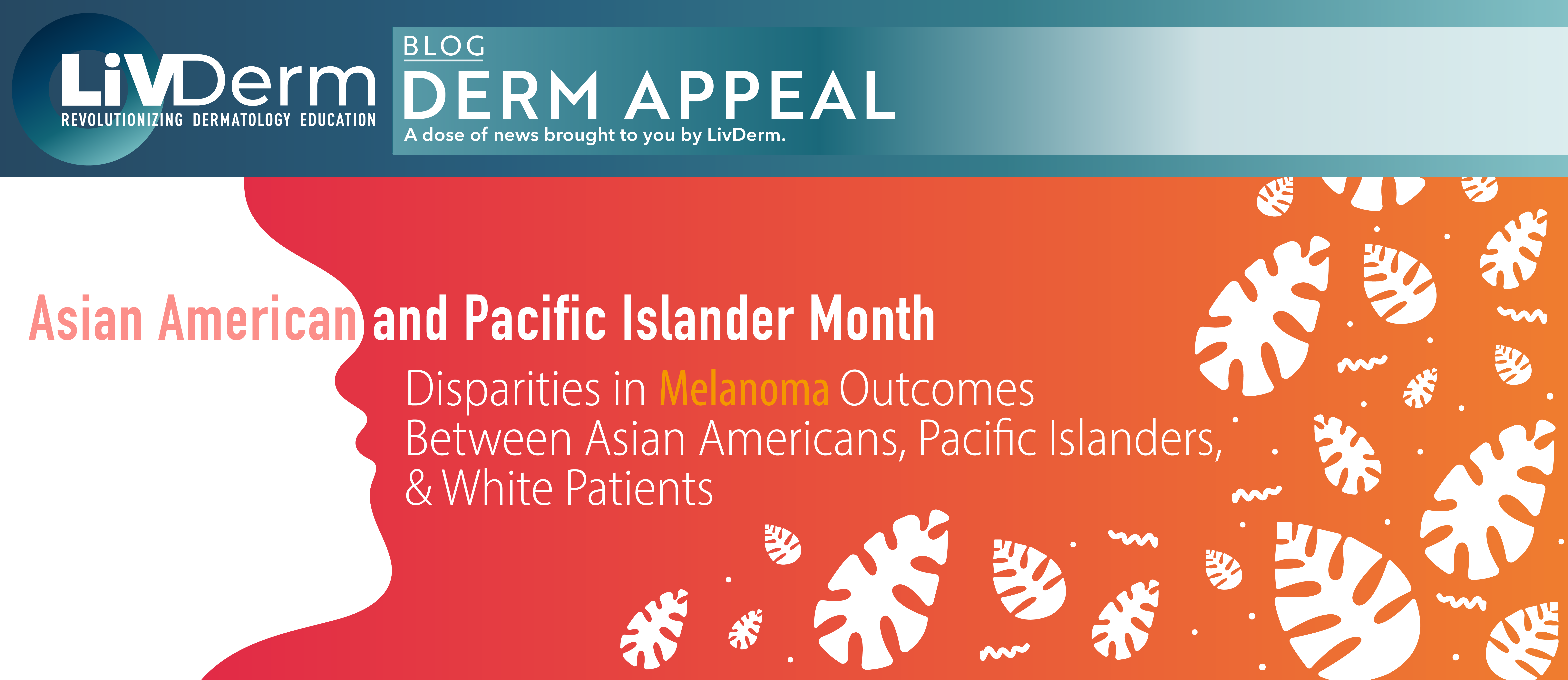The month of May celebrated Asian American and Pacific Islander Heritage Month a period dedicated to the recognition of the contributions and influence of Asian Americans and Pacific Islander Americans to the history, culture, and achievements. In light of this observance, the subject of disparities in melanoma outcomes between patients of Asian American and Pacific Islander (AAPI) heritage and those of Caucasian descent is particularly pertinent. Current statistics indicate that Asian Americans and Pacific Islanders are less frequently diagnosed with skin cancer than White Americans, yet they experience increased mortality rates once diagnosed of up to 27% higher risk than White patients.
Examining Differences in Melanoma Outcomes and Survival Rates
According to recent research published in the Journal of the American Academy of Dermatology, Asian and Pacific Islander patients have decreased chances of surviving melanoma as well as a higher chance of delayed diagnosis when compared with White patients. As part of their 2020 investigation, a team of researchers examined data from nearly 236,000 White Americans and 1,700 AAPI patients who had been diagnosed with primary cutaneous melanoma. The mean age at diagnosis was 57.4 years for White patients and 56.2 years for AAPI patients. Significant differences in tumor presentations were noted between the two demographics, including acral lentiginous melanoma as a percentage of all melanomas, mean Breslow depth, presence of ulceration, lymph node involvement, as well as stage at diagnosis. Notably, these factors are prognostic indicators of cutaneous melanoma and were reflected in a higher percentage of AAPI patients.
Poor Outcomes and Lowered Survival in AAPI Patients
Overall, the study reported that AAPI patients with melanoma experience a 27% higher risk of mortality compared to White patients – a poor survival rate that is often overlooked in the United States. The latest findings validated those of previous studies indicating that Asian American and Pacific Islander patients have poorer overall and disease-specific survival when compared with White patients. This is primarily a result of later diagnosis and delays to treatment with many patients presenting at higher Breslow depths. Additionally, the researchers noted that AAPI patients rarely receive regular skin examinations in part due to the commonly held misconception that darker skinned individuals are immune to skin cancers along with the low incidence of melanoma among AAPI patients.
Addressing Disparities in Melanoma Care
The study’s conclusions can be used to inform public health interventions with the aim of minimizing disparities in melanoma care and survival outcomes among different patient demographics. As educational materials and practice protocols are often not tailored to minority populations, it is important for both physicians and patients to be aware of disparities in cancer risks as related to ethnicity and racial backgrounds.
Consistently, Asian American and Pacific Islander patients present with advanced tumors at higher rates. Enhancing melanoma awareness and education efforts with an emphasis on early diagnosis and treatment within the minority community can greatly benefit survival rates and improve patient outcomes. Due to the differences in anatomic location and histology of tumors as noted in scientific literature, prevention methods and clinical practice methodologies should be more carefully and individually tailored to serve the needs of minority patients who often already struggle with obtaining medical care due to disparities in access, education, and other relevant socioeconomic factors.

















